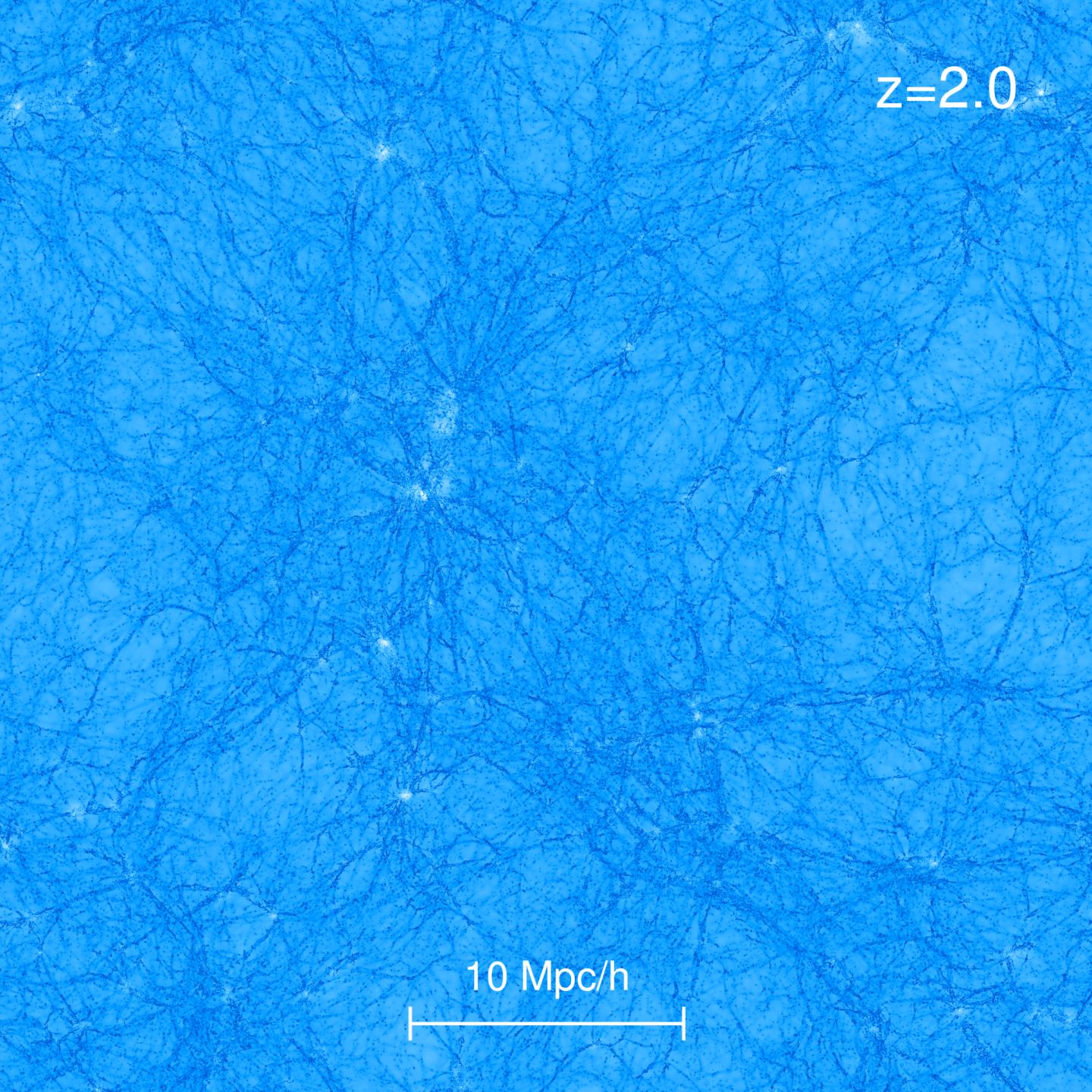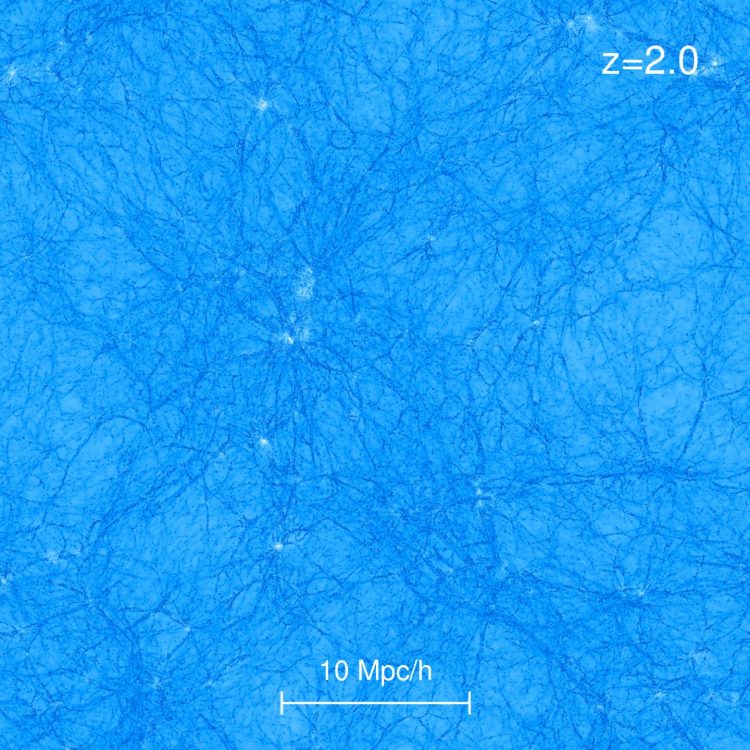Studying the interactions between light and gas in intergalactic space, SISSA scientists are trying to unravel the composition of the universe

Credit: The Sherwood Simulation Suite
Moving through cosmic forests and spider webs in deep space in search of answers on the origin of the Cosmos. “We have tested a scenario in which dark matter is composed by non-stellar black holes, formed in the primordial Universe” says Riccardo Murgia, lead author of the study recently published in Physical Review Letters. The research was carried out together with his colleagues Giulio Scelfo and Matteo Viel of SISSA – International School for Advanced Studies and INFN – Istituto Nazionale di Fisica Nucleare (Trieste division) and Alvise Raccanelli of CERN. Primordial black holes (PBH for cosmologists) are objects that formed just fractions of a second after the Big Bang, considered by many researchers among the principal candidates in explaining the nature of dark matter, above all following direct observations of gravitational waves by the VIRGO and LIGO detectors in 2016.
“Primordial black holes remain hypothetical objects for the moment, but they are envisaged in some models of the primordial universe” underlines Raccanelli of CERN. “Initially proposed by Stephen Hawking in 1971, they have come back to the fore in recent years as possible candidates for explaining dark matter. It is believed that this accounts for approximately 80% of all matter present in the Universe, so to explain even just a small part of it would be a major achievement.
Not only, but looking for evidence of the existence of PBHs, or excluding their existence, provides us with information of considerable relevance on the physics of the primordial universe.”
Cosmic forests and spider webs
In this work, the scientists have concentrated on the abundance of PBHs that are 50 times larger than the solar mass. In short, the researchers have tried to better describe several parameters linked to their presence (specifically mass and abundance) by analysing the interaction of the light emitted from extremely distant quasars with the cosmic web, a network of filaments composed of gas and dark matter present throughout the Universe. Within this dense weave, the scholars have concentrated on the “Lyman-alpha forest”, namely the interactions of the photons with the hydrogen of cosmic filaments, which presents characteristics closely linked to the fundamental nature of dark matter.
Between supercomputers and telescopes
Simulations carried out using the Ulysses supercomputer of SISSA and ICTP have been able to reproduce the interactions between photons and hydrogen and they have been compared with “real” interactions, detected by the Keck telescope (in Hawaii). The researchers were then able to trace several properties of primordial black holes to understand the effects of their presence.
“We used a computer to simulate the distribution of neutral hydrogen on sub-galactic scales, which manifests itself in the form of absorption lines in the spectra of distant sources,” continues Murgia. “Comparing the results of our simulations with the data observed, it is possible to establish limits on the mass and abundance of primordial black holes and determine whether and to what extent such candidates can constitute dark matter.”
The results of the study seem to disadvantage the case that all dark matter is composed of a certain type of primordial black holes (those with a mass greater than 50 times that of the sun) but they do not totally exclude that they could constitute a fraction of it.
“We have developed a new way to easily and efficiently explore alternative scenarios of the standard cosmological model, according to which dark matter would instead be composed of particles called WIMPs (Weakly Interacting Massive Particles)”.
These results, important for the construction of new theoretical models and for the development of new hypotheses about the nature of dark matter, offer much more precise indications for tracing the intricate path to understanding one of the largest mysteries of the cosmos.
###
Media Contact
Marina D’Alessandro
[email protected]
Original Source
http://www.
Related Journal Article
http://dx.





